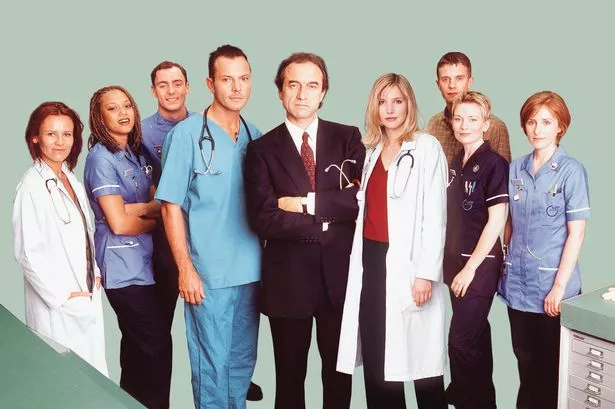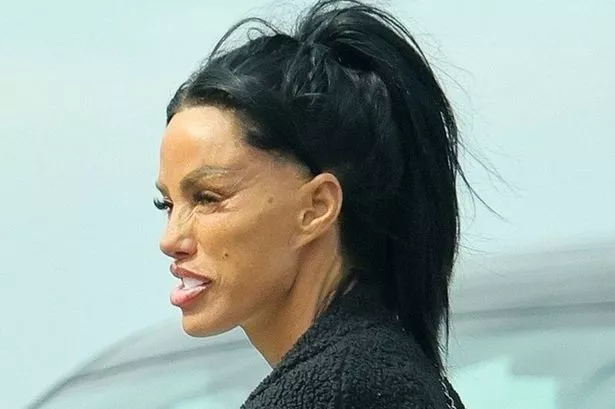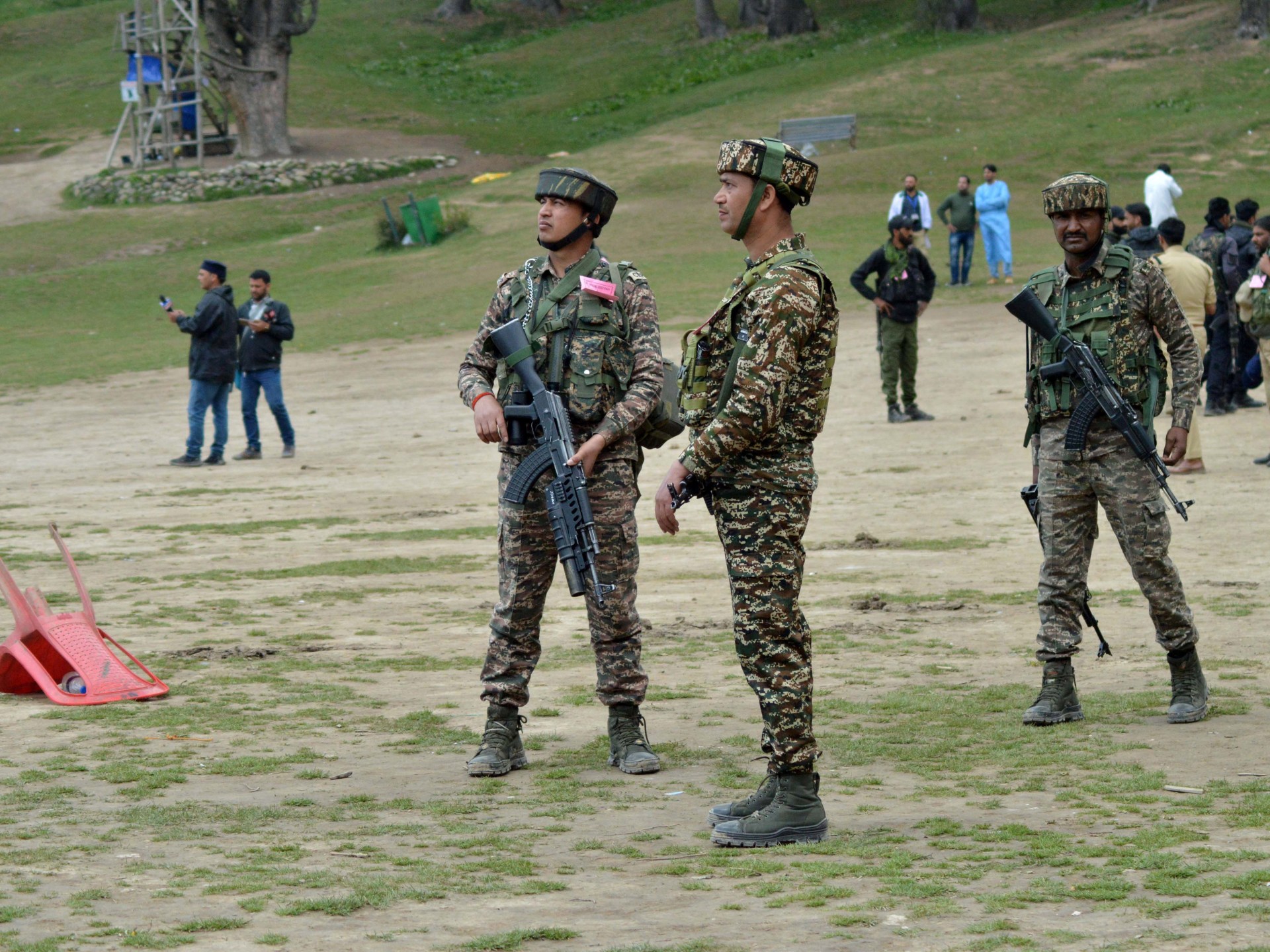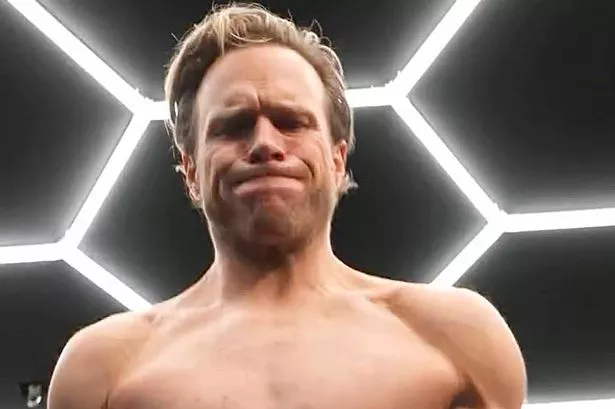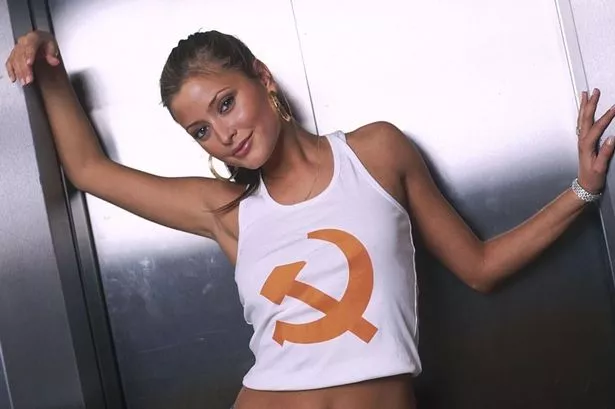Harare, Zimbabwe – Guy Watson-Smith felt hurt and betrayed when his 5,000-hectare (12,355-acre) farm in Beatrice, in Zimbabwe’s Mashonaland East province, was violently invaded by three armed men in the early 2000s.
The then-51-year-old white commercial farmer was not just losing his land; he was leaving behind hundreds of workers and their families, many of whom he had known since childhood.
“We cried,” the 75-year-old told Al Jazeera.
On the morning of September 18, 2001, Watson-Smith, his two farm managers, and his unwelcome visitors sat at a table on the patio.
Watson-Smith’s wife, Vicky, offered them a cup of tea.
But the message was simple: leave or die.
His family was given two hours to pack.
They fled to the capital, Harare, 54km (33.5 miles) away, seeking refuge at his father-in-law’s home in the Avenues, an inner-city suburb.
Watson-Smith’s ordeal was not an isolated incident.
Across the country, war veterans armed with pistols led similar land grabs, together with their children and with assistance from the police’s elite units.
The invasions were part of the chaotic Fast Track Land Reform Program (FTLRP), launched under President Robert Mugabe in 2000 to reclaim land from about 4,000 white farmers and redistribute it to landless Black Zimbabweans.
But instead of redressing past injustices, Zimbabweans say it fuelled economic and land insecurity as mainly governing party loyalists benefitted from the reclamations.
More than two decades on, a struggling agricultural sector haunts Zimbabwe, leaving the question of land ownership unresolved, even as the government has begun to pay compensation to white farmers.
Colonial land invasions
When land was seized from white farmers in the early 2000s, it was forcibly and sometimes violently taken, with at least seven people killed in the process.
However, Zimbabwe’s land struggles did not begin with Mugabe’s FTLRP or even the country’s independence in 1980. The tensions stretch back over a century to the arrival of white British settlers in 1890.
When the British arrived, they invaded Mashonaland areas and took mining rights from the locals under agreements that the local leadership did not understand.
They then expanded control, violently displacing Black people from their fertile ancestral lands.
Forced into barren areas with poor soil, low rainfall and tsetse flies, Black Zimbabweans struggled to farm or raise cattle.
By the 1950s, land was formally divided along racial lines, with white settlers holding the most fertile areas.
This deep injustice fuelled the liberation struggle.
Revolutionary groups like ZANU and ZAPU took up arms, and from 1964 to 1979, land was at the heart of the Rhodesian Bush War – also known as the Second Chimurenga, during which Black Zimbabweans fought for independence from the white minority government.
The 1969 Land Tenure Act, which escalated Black land evictions, was a breaking point.
For many fighters, reclaiming the land became not just about survival, but about identity and economic freedom.
The war ended with the Lancaster House Agreement drawn up and signed in London in December 1979, setting the stage for Zimbabwe’s first democratic elections.
On April 18, 1980, after Mugabe’s victory, Zimbabwe gained independence from Britain. The Lancaster agreement barred Mugabe’s government from forcibly seizing land, allowing only voluntary transfers under a “willing buyer, willing seller” system from 1980 to 1990.
Many war veterans felt betrayed.
They had fought for liberation, expecting immediate land redistribution, but years of slow negotiations left them frustrated. From 1990 to 2000, land reclamations took place by the government compulsorily buying land from white commercial farmers using funds from donors, including Britain.
However, the process became politicised as some senior politicians and elites redistributed land among themselves instead of to the poor. Some of the funds were allegedly loaned to ruling ZANU-PF party loyalists and not used for the intended purposes of land redistribution. This raised accusations of corruption, causing some donors to cut funding.
Britain, which had initially committed 20 million pounds ($26.6m at the current rate) to fund the land reform programme, withdrew support in 1997.
The United Kingdom said it could no longer accept responsibility for colonial injustices and would not fund a programme plagued by corruption and elite capture.
Donor funding helped the Zimbabwean government buy land from white commercial farmers, enabling about 50,000 Black farmers to receive land. But the programme was ultimately underfunded and fell far short of the targeted 8 million hectares (19.8 million acres).

Mugabe-era land grabs
In February 2000, under mounting pressure from furious war veterans, Mugabe attempted to amend the constitution to allow land seizures without compensation.
When the referendum failed, the war veterans and their families took matters into their own hands by invading farms. Soon, Mugabe officially followed suit by launching the FTLRP.
At that time, the minority white population, which made up about 4 percent of the country, owned more than half the land in Zimbabwe.
For months, Watson-Smith’s land, where he grew tobacco, maize, paprika, groundnuts and Rhodes seed for export, remained untouched until the day a powerful war hero with the ZANU-PF set his sights on it.
Watson-Smith was in Harare, where he worked as the Mashonaland East provincial chairman of the Commercial Farmers Union, a body representing white commercial farmers, when he learned that his farm had been invaded by retired General Solomon Mujuru, a former commander of the Zimbabwe Defence Forces and top ZANU-PF figure in the province.
Efforts to move their assets like tractors and vehicles went in vain, Watson-Smith said, as the invaders allowed only his wife to take their personal belongings, like photographs and furniture, from the house before leaving.
Even the courts offered little protection.
Though Watson-Smith won a High Court ruling to reclaim his assets, Mujuru’s thugs chased away the sheriff sent to enforce the order.
Watson-Smith and his family were lucky to escape their farm unharmed. But they were still afraid. On December 21, 2001, they fled through the Beitbridge border post to South Africa, later moving to France to start a new life.

Even Black farmers not safe
Before the farm invasions, Zimbabwe produced enough to feed itself and for exports to Southern Africa and Europe. Agriculture was the backbone of the economy, employing much of the country’s workforce. Some Black Zimbabweans had also risen to the top, managing farms.
Initially, Mugabe’s land expropriation programme was meant to redistribute land to disadvantaged Black Zimbabweans to boost equity and agricultural development.
But under the cover of correcting colonial injustices, powerful officials seized productive farms from both white and Black farmers.
Kondozi Estates in eastern Zimbabwe was one of the farms seized by senior ZANU-PF figures in 2004.
The land in Manicaland province was co-owned by Black Zimbabwean Edwin Moyo and the white de Klerk family.
At the time, it was a vital exporter of fresh produce, particularly high-quality beans, gooseberries, corn, mangetout and sugar snaps to European retailers like Tesco and Sainsbury’s.
It employed hundreds in Mutare, and its destruction was a death blow to the local economy.
The same pattern repeated itself on other farms, locals say, with Black owners without strong ties to the ZANU-PF continuing to face evictions.
In 2021, human rights defender and lawyer Siphosami Malunga lost his farm to ZANU-PF secretary-general Obert Mpofu.
Though Zimbabwe’s lower courts later ruled in his favour and he is back on his farm awaiting a High Court decision, the battle over its ownership rages on.
“Land reform was necessary,” 53-year-old Malunga told Al Jazeera.
“The colonial project dispossessed Blacks, pushing them on to barren land while whites took the best farms. But the way reform was handled enriched the elite while leaving ordinary Zimbabweans with nothing.”
Mugabe once campaigned for a “one man, one farm” policy. Yet his allies ignored it. Even his wife, Grace Mugabe, amassed at least 15 farms.
Most of the beneficiaries of the FTLRP were ZANU-PF loyalists, experts note.
Rejoice Ngwenya, a political analyst based in Harare, said Mugabe’s land reform was not about Black empowerment.
“It had motives: firstly, to pacify war veterans that were agitating for more recognition; secondly, to punish white commercial farmers who were supporting the opposition. The man was insecure,” he told Al Jazeera.
“If you promise to not expropriate Black-owned farms, you should not touch Moyo or Malunga’s farms. But ZANU-PF does not care,” he remarked.
Vivid Gwede, another Harare-based political analyst, said land ownership has been used as a tool to punish disloyalty or reward loyalty to the governing party.
“On account of politics, some Black farmers have had their land invaded,” he said.

Compensation and rejection
Unlike white commercial farmers who spent decades learning the land, most of the ZANU-PF-aligned farmers who took over had no farming experience.
The new owners were people who had spent most of their lives in the bush fighting against white colonialists, experts note, while many Black farm workers who had experience managing white-owned farms did not benefit from land reclamations.
As a result of the chaotic and violent invasions, knowledge of agricultural practices was also not passed on.
Soon, the Southern African nation with a once-thriving agricultural economy began to face a food crisis, later compounded by climate change.
For years, many Zimbabweans have depended on food aid from donors like the United Nations World Food Programme. In April 2024, the government declared a national disaster as a severe El Nino-induced drought left more than half of Zimbabwe’s 15.1 million people facing hunger.
The crisis exposed the country’s collapsed agricultural sector. Before land seizures, white commercial farmers and Black farmers like Moyo had irrigation schemes to mitigate droughts. ZANU-PF dismantled these systems, leaving the country vulnerable.
Zimbabwe’s collapse in agricultural productivity stems not just from poor planning, but from a deeper culture of impunity, experts say.
Across the country, though court orders were issued to stop farm invasions and evictions of white commercial farmers, these were ignored. Since 2000, former farmers have filed hundreds of legal cases, trying to reclaim their assets, with little success.
The 2013 constitution promised compensation, but only for farm improvements, not the land itself.
When Emmerson Mnangagwa took power in a 2017 military coup, he inherited a shattered economy, abandoned and poorly managed farms, food shortages, and soaring unemployment.
Desperate for solutions, he reached a $3.5bn compensation deal with white farmers in 2020, hoping to mend relations with the West and lift US economic sanctions imposed in 2001. But the plan stalled.
In October 2024, the government set aside $20m to compensate a handful of foreign white farmers from Denmark, Switzerland, the Netherlands and Germany whose investments were affected by the land reform programme.
This month, Finance Minister Mthuli Ncube announced that the government had paid $3.1m to white former farmers who lost land during Zimbabwe’s land reform.
However, the Compensation Steering Committee (CSC), a domestic body representing white farmers, criticised the compensation as a token gesture and rejected the deal, saying it wants negotiations instead.
“We’re willing to talk, but they [the government] are not talking to us,” Ian McKersie, chairman of the CSC told Al Jazeera.
In response, Nick Mangwana, permanent secretary in Zimbabwe’s Ministry of Information, told Al Jazeera there are “factions” among the white farmers. “If they speak, they are speaking for themselves, they do not represent the mainstream,” he said. “It is preposterous [to reject the deal]. It does not make sense.”
Mangwana also denied that there are ongoing land seizures, such as the case of Malunga, whose farm was taken in 2021. “These are just disputes … It is not a land invasion. There is no land invasion in Zimbabwe,” he said.

Untended farms and uncertain futures
Now in France, Watson-Smith runs a real estate business.
But back in Zimbabwe, his once-productive Alamein Farm has fallen into disuse; its land is now less vibrant than it used to be.
After General Mujuru, who was one of Zimbabwe’s most feared men, seized Watson-Smith’s farm, he turned it into a hunting ground. Following Mujuru’s death in 2011, his wife, former Vice President Joice Mujuru, kept the land but struggled to maintain it.
Meanwhile, Kondozi Estates, the major part-Black owned farm taken by ZANU-PF elites, also fell into decay. A visit this year revealed abandoned equipment and overgrown fields.
Across the country, seized farms remain untended.
During the land reform, farms were given long-term leases. But banks refused to recognise these leases as collateral, making it impossible for farmers to secure loans.
In late 2024, President Mnangagwa ordered the Ministry of Lands to stop issuing permits and leases in favour of title deeds. But experts warn this is problematic as it does not address the land dispute between resettled farmers and dispossessed white commercial farmers.
“If the government issues title deeds on land already under existing historic title deeds, it’s unlawful,” Willie Spies, a lawyer assisting dispossessed Zimbabweans, told Al Jazeera
“A legitimate process requires compensating former farmers fairly before transferring ownership.”
New farmers have already benefitted from state subsidies, including a 2007 mechanisation programme that distributed tractors and harvesters without repayment.
Zimbabwe’s debt now stands at $21bn, according to the World Bank – $13bn owed to international creditors and $8bn in domestic debt. Some of the domestic debt is a result of the agricultural subsidies, which ended up benefitting political elites and not the poor rural farmers.
Corruption runs deep, said Malunga, who is still awaiting a final court decision about ownership of his farm.
“Agricultural subsidy programmes were hijacked by the elite, enabling grand corruption and theft of billions,” he said.
While title deeds could offer land security to the new farm owners, he warned: “This risks creating a privileged Black landowning class.”
Watson-Smith notes that although title deeds helped farmers like him by “open[ing] the doors to credit for irrigation, dams and every farm improvement”, giving title deeds to new farm owners without addressing past injustices is meaningless.
“It might impress Zimbabwean banks, but international lenders won’t recognise stolen property,” he said.
Once the backbone of Zimbabwe’s economy, agriculture is now crippled by corruption, mismanagement and political greed, farmers say.
Meanwhile, the scars of the land grabs remain, both for displaced former farmers and a nation still grappling with the fallout.
As many white farmers live in self-exile abroad, many common Black farmers are in limbo, facing off against senior politicians in the battle for land ownership.
For now, Malunga is back on his farm, growing tomatoes and other crops. But he remains unsettled.

